Abstract
BACKGROUND: Brucelosis is a severe acute febrile disease caused by bacteria of the genus Brucella. Its current diagnosis is based on clinical observations that may be complemented by serology and microbiological culture tests; however, the former is limited in sensitivity and specificity, the latter is time consuming. To improve brucelosis diagnosis we developed a test which is specific and sensitive and is capable of differentiating the six species of Brucella. MATERIALS AND METHODS: Four primers were designed from B. abortus sequences at the well-conserved Omp2 locus that are able to amplify the DNAs of all six species of Brucella. RESULTS: Our test detected all six species of Brucella. Their differentiation resulted directly from differences in the amplification patterns or was achieved indirectly using a RFLP present in one of the PCR products. The sensitivity and specificity of the new test were then determined; it was applied successfully in confirming the diagnosis of a patient whose clinical history and serology indicated infection with Brucella. CONCLUSIONS: The results make possible the use of a PCR test for Brucella detection and differentiation without relying on the measurement of the antibodies or microorganism culture. Our first results showed that the PCR test can confirm the presence of Brucella in blood samples of infected patients.
Full text
PDF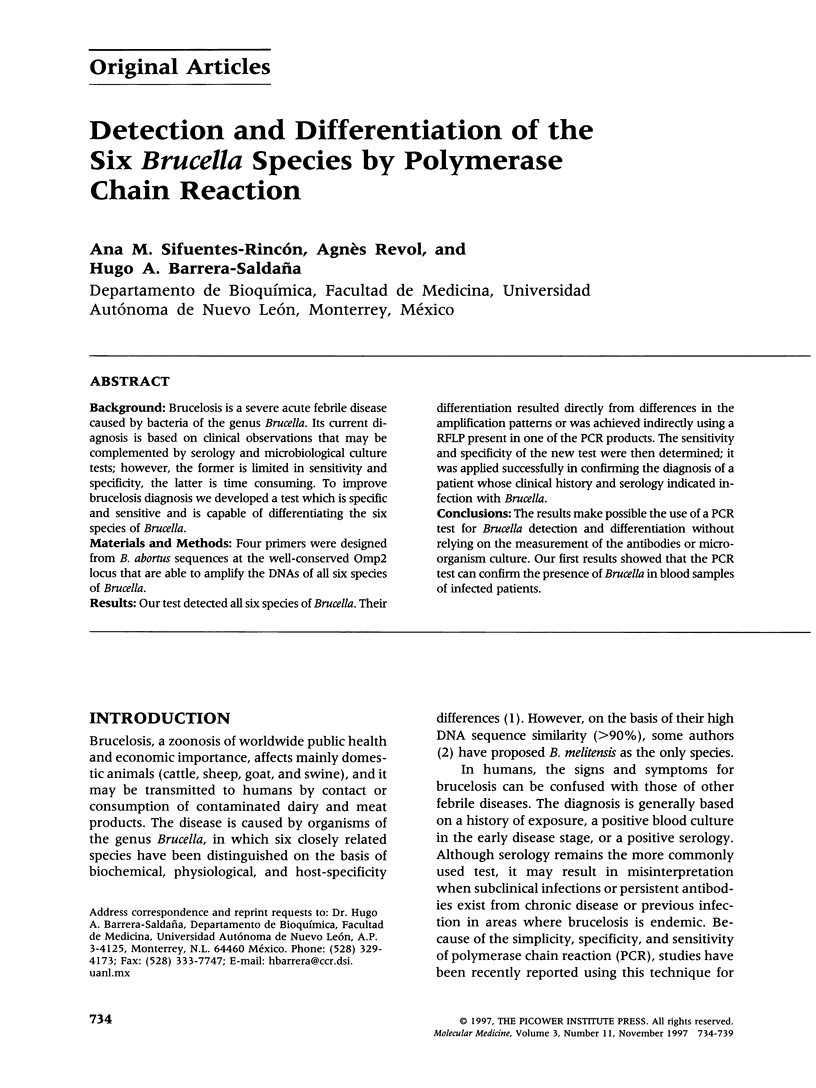

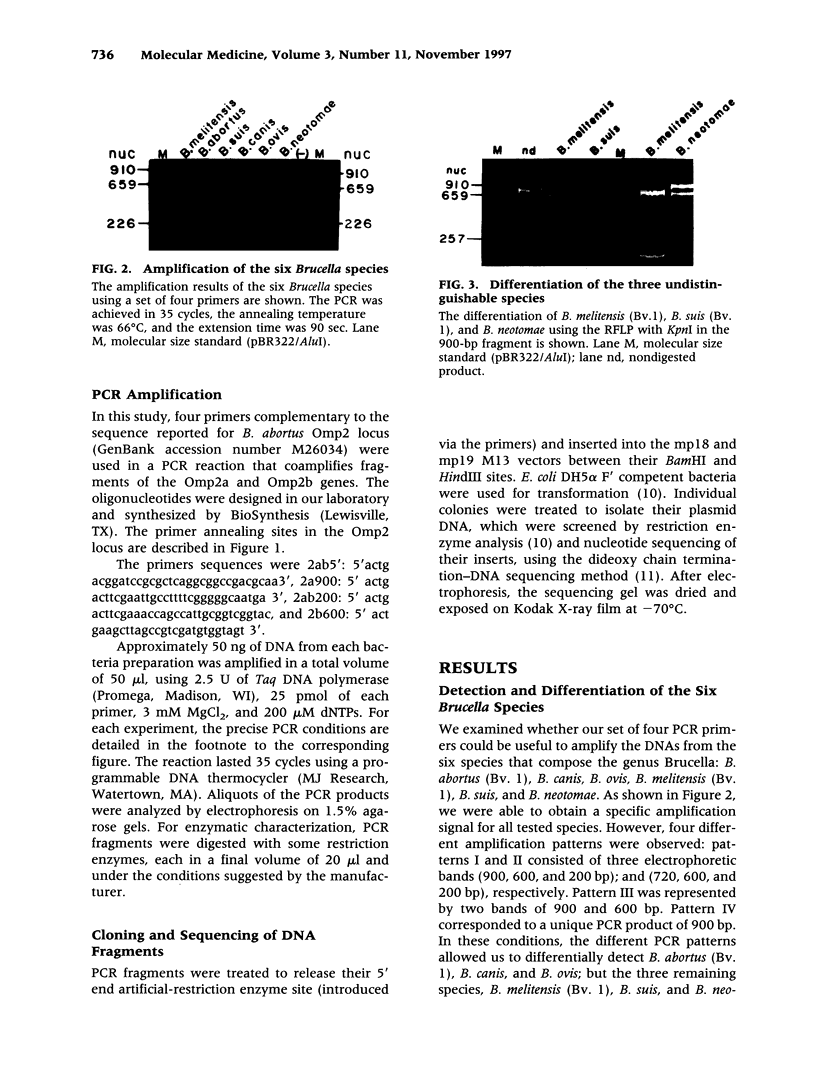
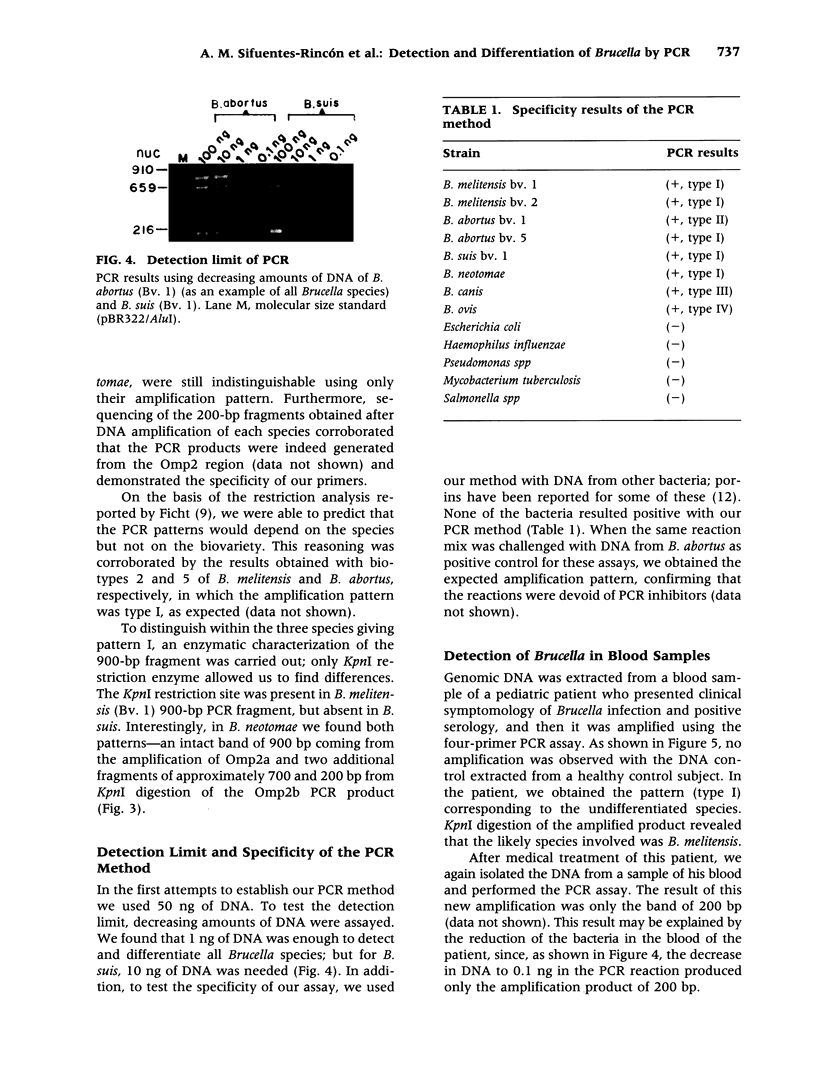
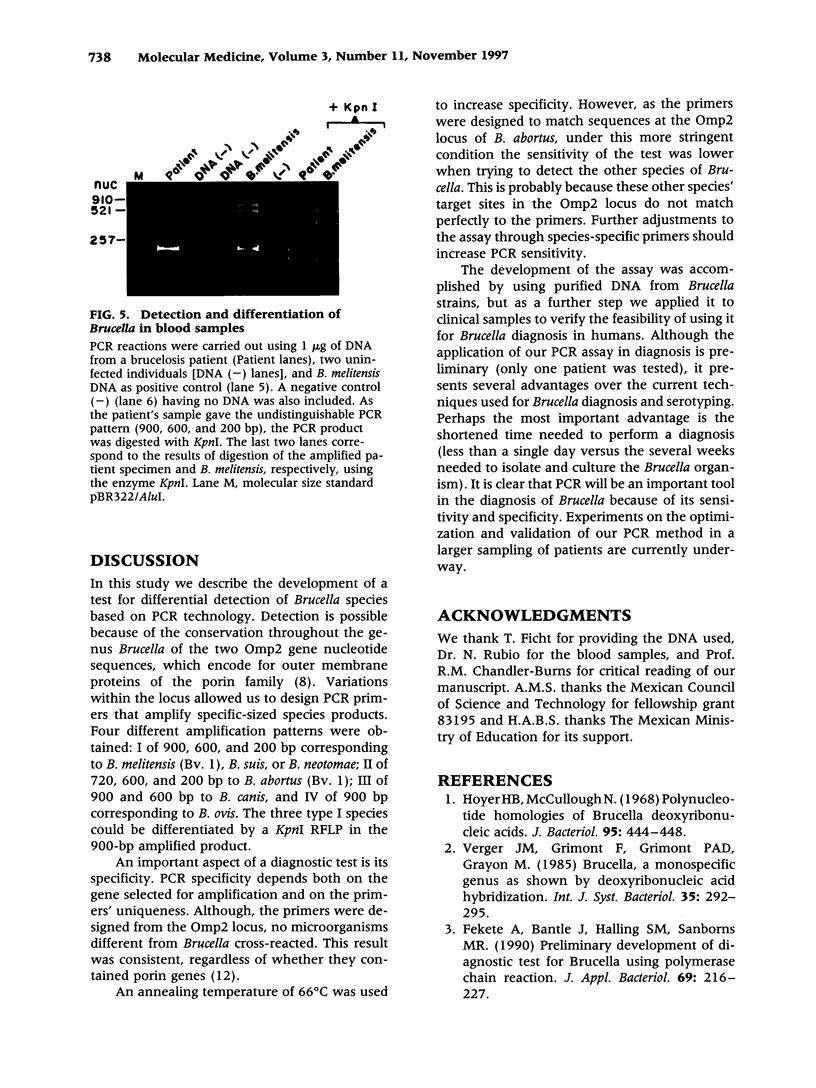
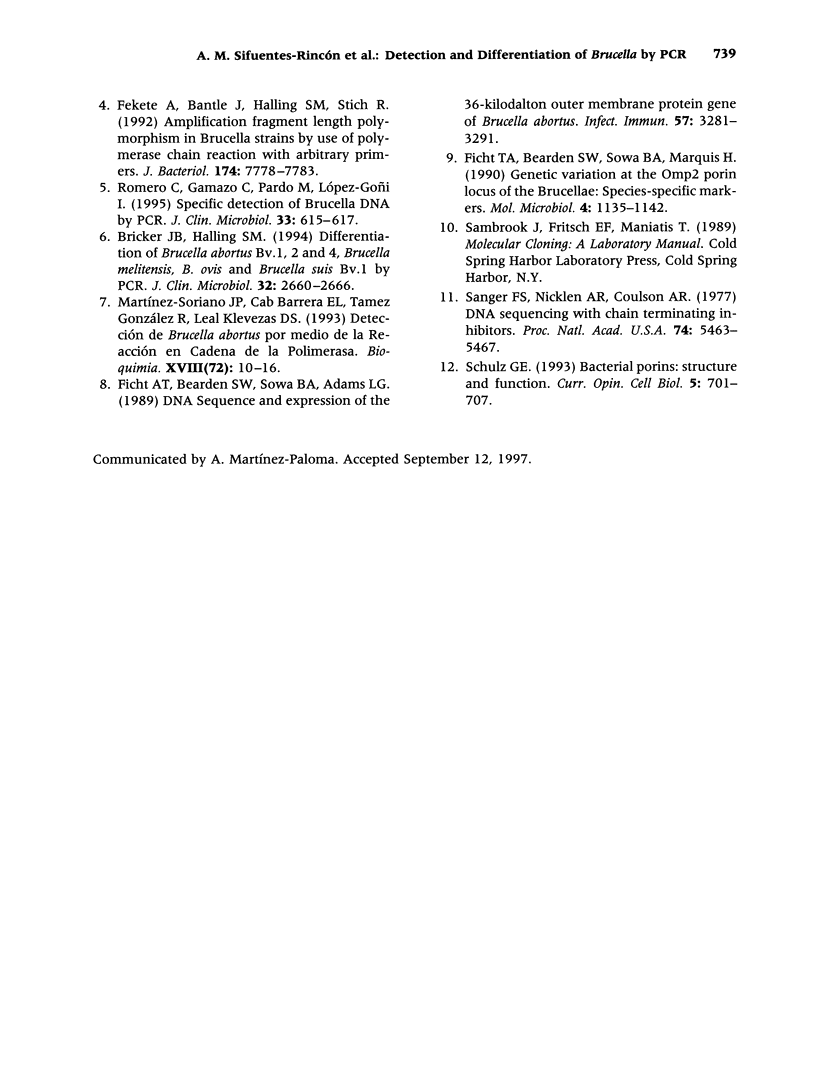
Images in this article
Selected References
These references are in PubMed. This may not be the complete list of references from this article.
- Bricker B. J., Halling S. M. Differentiation of Brucella abortus bv. 1, 2, and 4, Brucella melitensis, Brucella ovis, and Brucella suis bv. 1 by PCR. J Clin Microbiol. 1994 Nov;32(11):2660–2666. doi: 10.1128/jcm.32.11.2660-2666.1994. [DOI] [PMC free article] [PubMed] [Google Scholar]
- Fekete A., Bantle J. A., Halling S. M., Sanborn M. R. Preliminary development of a diagnostic test for Brucella using polymerase chain reaction. J Appl Bacteriol. 1990 Aug;69(2):216–227. doi: 10.1111/j.1365-2672.1990.tb01512.x. [DOI] [PubMed] [Google Scholar]
- Fekete A., Bantle J. A., Halling S. M., Stich R. W. Amplification fragment length polymorphism in Brucella strains by use of polymerase chain reaction with arbitrary primers. J Bacteriol. 1992 Dec;174(23):7778–7783. doi: 10.1128/jb.174.23.7778-7783.1992. [DOI] [PMC free article] [PubMed] [Google Scholar]
- Ficht T. A., Bearden S. W., Sowa B. A., Adams L. G. DNA sequence and expression of the 36-kilodalton outer membrane protein gene of Brucella abortus. Infect Immun. 1989 Nov;57(11):3281–3291. doi: 10.1128/iai.57.11.3281-3291.1989. [DOI] [PMC free article] [PubMed] [Google Scholar]
- Ficht T. A., Bearden S. W., Sowa B. A., Marquis H. Genetic variation at the omp2 porin locus of the brucellae: species-specific markers. Mol Microbiol. 1990 Jul;4(7):1135–1142. doi: 10.1111/j.1365-2958.1990.tb00688.x. [DOI] [PubMed] [Google Scholar]
- Hoyer B. H., McCullough N. B. Polynucleotide homologies of Brucella deoxyribonucleic acids. J Bacteriol. 1968 Feb;95(2):444–448. doi: 10.1128/jb.95.2.444-448.1968. [DOI] [PMC free article] [PubMed] [Google Scholar]
- Romero C., Gamazo C., Pardo M., López-Goñi I. Specific detection of Brucella DNA by PCR. J Clin Microbiol. 1995 Mar;33(3):615–617. doi: 10.1128/jcm.33.3.615-617.1995. [DOI] [PMC free article] [PubMed] [Google Scholar]
- Sanger F., Nicklen S., Coulson A. R. DNA sequencing with chain-terminating inhibitors. Proc Natl Acad Sci U S A. 1977 Dec;74(12):5463–5467. doi: 10.1073/pnas.74.12.5463. [DOI] [PMC free article] [PubMed] [Google Scholar]
- Schulz G. E. Bacterial porins: structure and function. Curr Opin Cell Biol. 1993 Aug;5(4):701–707. doi: 10.1016/0955-0674(93)90143-e. [DOI] [PubMed] [Google Scholar]






